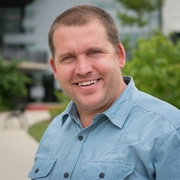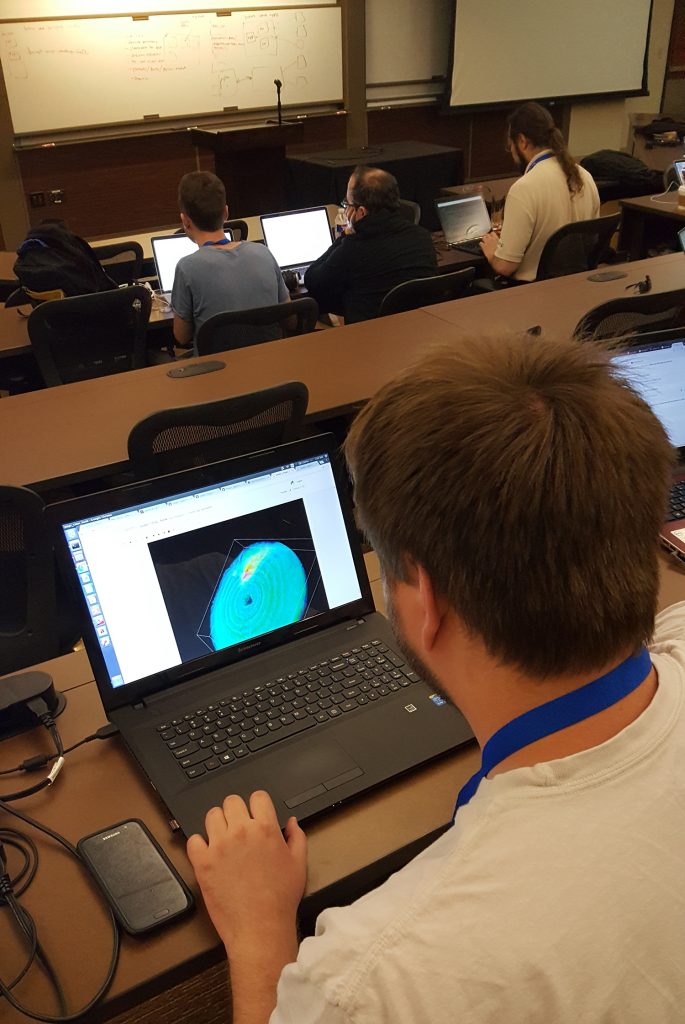Learning New Tools and Giving Back—ARM at SciPy2017
Published: 8 August 2017

Editor’s Note: Scott Collis, science lead on the Python ARM Radar Toolkit, ARM’s precipitation radar translator, and radar meteorologist at Argonne National Laboratory, sent in this update.
ARM developers, translators, and engineers from three laboratories attended the Scientific Computing with Python 2017 (SciPy2017) conference in Austin, Texas, this July. SciPy is a unique conference focused on scientific applications of the programming language Python.
The conference is organized into three components. The first two days are tutorials, followed by three days of conference talks.
What makes SciPy unique is the final two-day code sprint, where attendees collaborate to improve the state of open source packages live at the conference. This code sprint not only improves the open source packages, but gives attendees a chance to learn from experienced software developers.
A unique aspect of SciPy is that it focuses on the tools that are used across diverse domains. There is a focus on the “how” over the “what.” The main benefit to the ARM Facility is attendees come away with a quiver of new tools saving many hours of coding and research.
Developers and engineers from across ARM attended tutorials at the beginning of the week. They were led by expert instructors (often core code developers) on machine learning, visualization, code optimization, and project Jupyter (an interactive notebook environment and tool for scientific reproducibility).

The main part of the conference kicked off Wednesday with keynote and poster sessions. Precipitation Radar Translator and Py-ART lead Scott Collis presented a poster on ARM’s radar retrieval efforts. Bobby Jackson and Mark Picel, also from Argonne, showed some recent results from Climate Model Development and Validation (CMDV)-funded work on multi-Doppler vertical velocity retrievals and storm cell tracking.
On Friday, Joseph Hardin, ARM radar engineer at Pacific Northwest National Laboratory, gave a well-received talk on WARNO, otherwise known as Watchdog for ARM Radar Network Operations, demonstrating how Python tools were being used to track the health of the ARM radar network.
Bhargavi Krishna, Oak Ridge National Laboratory, and Erol Cromwell and Carina Lansing, Pacific Northwest National Laboratory, and Gökhan Sever, a numerical modeler from Argonne, also attended to learn the latest tools in the SciPy stack, which will help them better deliver data to ARM users.
Saturday and Sunday was set aside for code sprinting where diverse—by funding and field—scientists get together in large groups and collaboratively work through issues in popular community software packages. Bobby and Zach Sherman, a software developer from Argonne, sprinted on the three-dimensional visualization package yt, where the team was very interested in using yt to visualize ARM radar data. Mark sprinted on Pandas, which is a high-performance data analysis library.
ARM team members use open source software every working day. SciPy sprints allow us to give back to the community tools that make our work possible and learn from very clever developers along the way!
Cheers!
The ARM Climate Research Facility is a DOE Office of Science user facility. The ARM Facility is operated by nine DOE national laboratories, including .
Keep up with the Atmospheric Observer
Updates on ARM news, events, and opportunities delivered to your inbox
ARM User Profile
ARM welcomes users from all institutions and nations. A free ARM user account is needed to access ARM data.


















